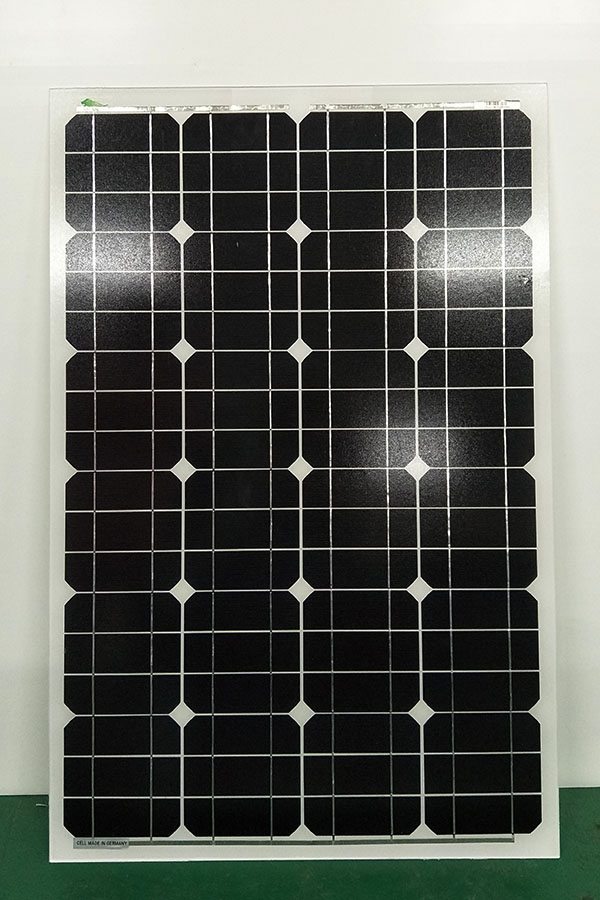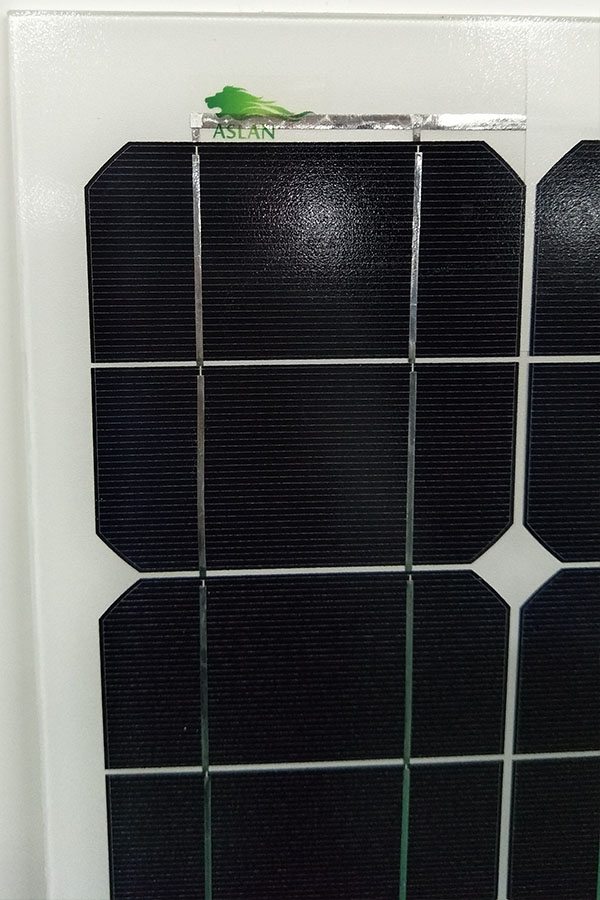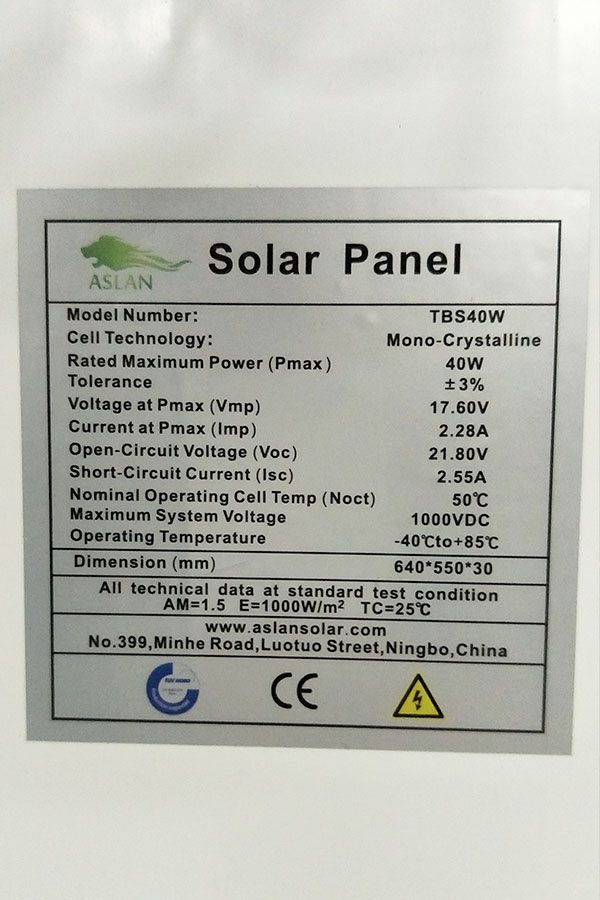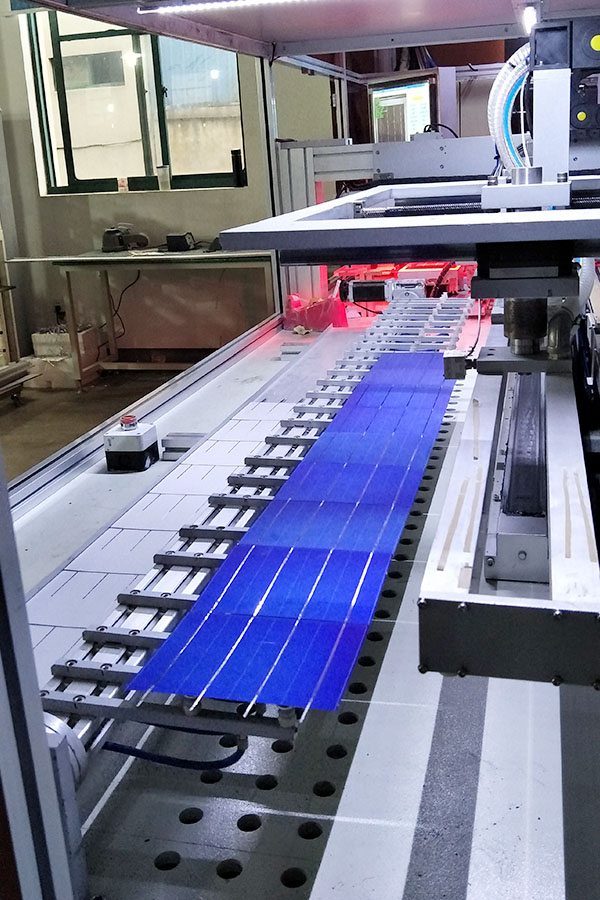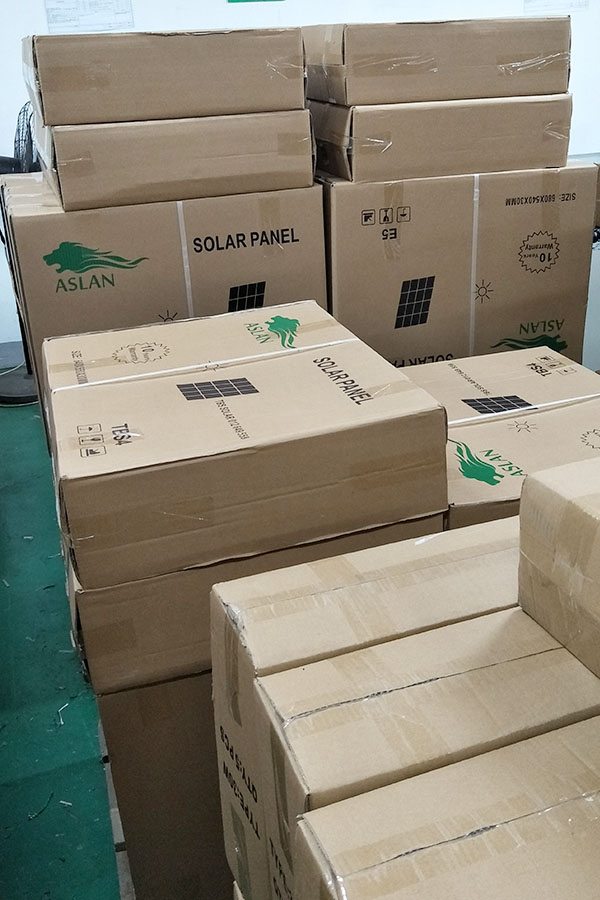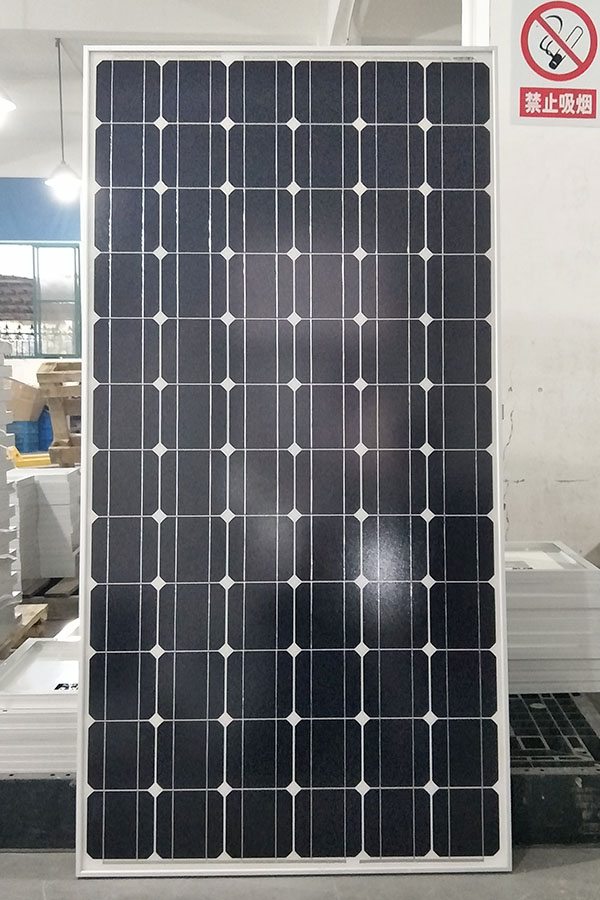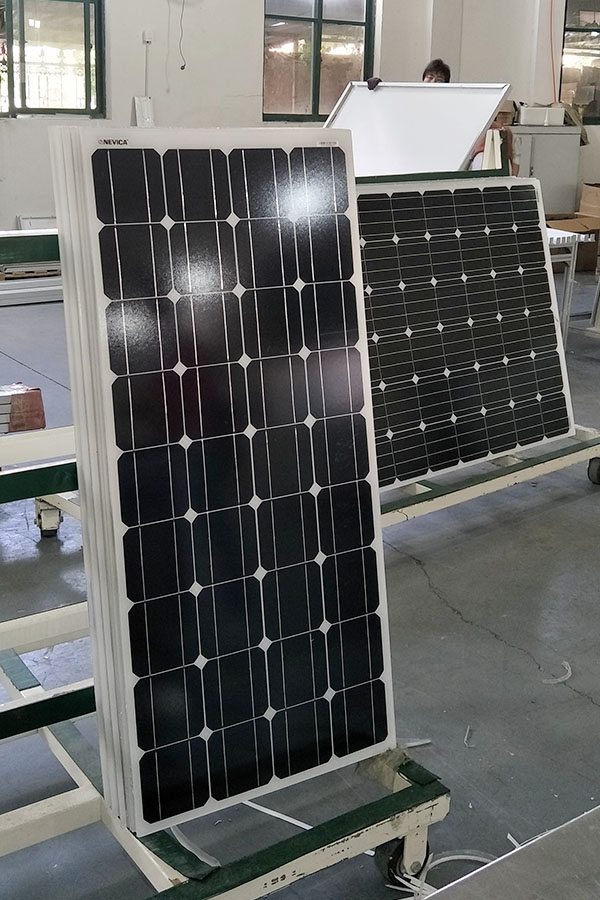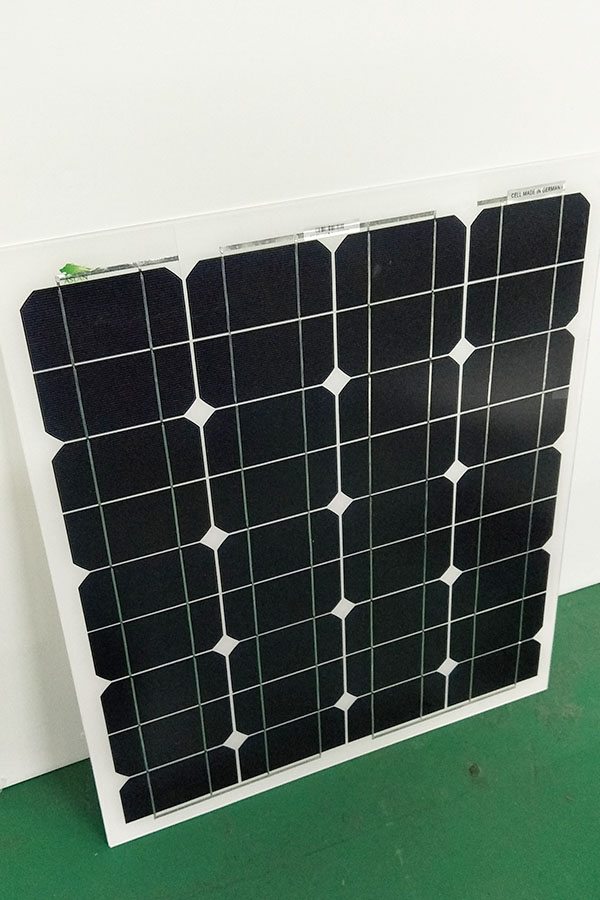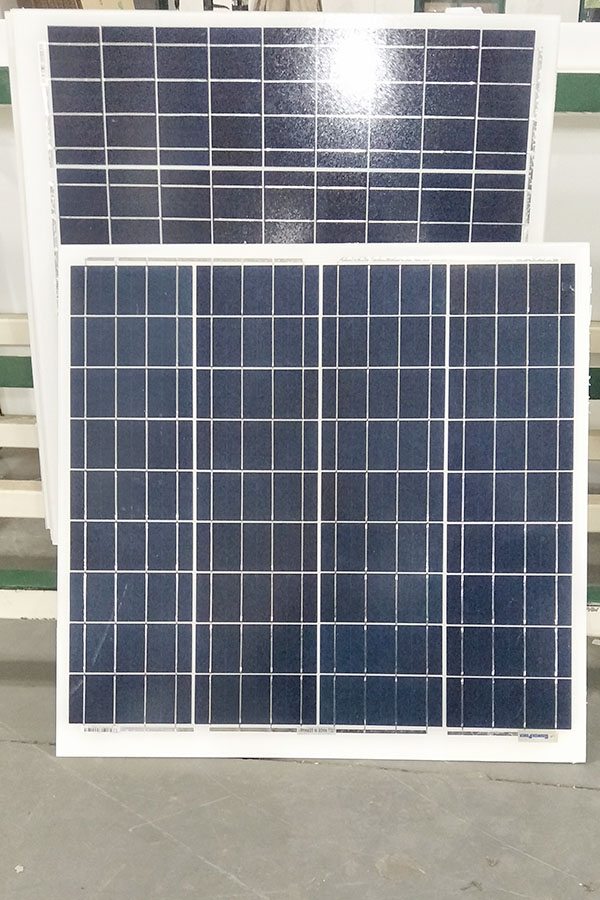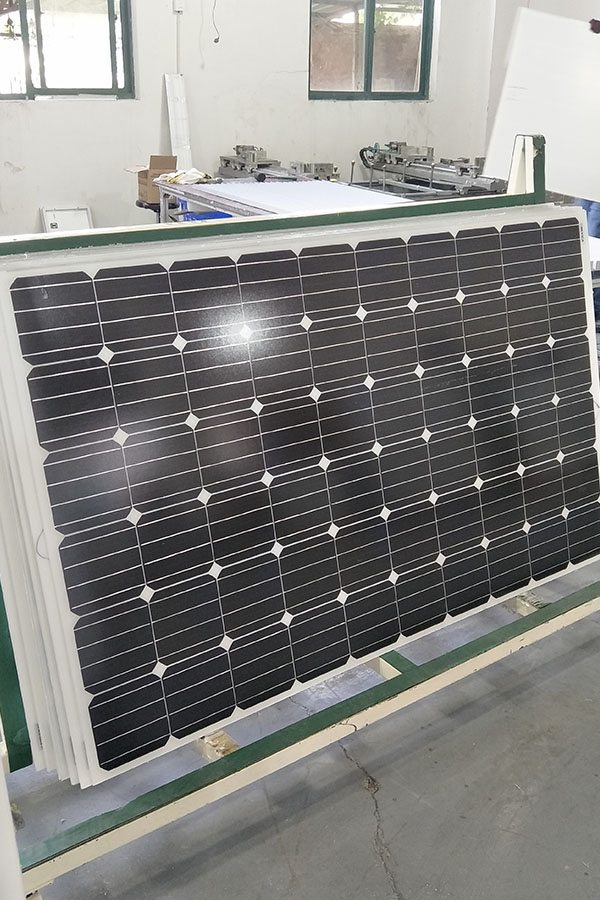Manufacturer for Mono-Crystalline 60W Solar Panel Manufacturer in France
Short Description:
We always stick to the principle "Quality First, Prestige Supreme". We are fully committed to providing our clients with competitively priced quality products, prompt delivery and professional service for Manufacturer for Mono-Crystalline 60W Solar Panel Manufacturer in France, Welcome to build the well and long standing business relationships with our company to create a glorious future together .customers' satisfaction is our eternal pursuit
Mono-Crystalline 60W Solar Panel
Technical parameter
Maximum Power(W) 60W
Optimum Power Voltage(Vmp) 18.46V
Optimum Operating Current(Imp) 3.25A
Open Circuit Voltage(Voc) 22.51V
Short Circuit Current(Isc) 3.57A
Mechanical Characteristics
Cell Type Mono-crystalline 125 x 83mm
No of Cell 36 (4x9pcs)
Dimensions 821x554x35mm
Weight 5.0Kg
Front Glass 3.5mm,High Transmission, Low Iron,Tempered Glass
Junction box IP65 Rated
Output Cable TUV 1×4.0mm2/UL12AWG,Length:900mm
Temperature and Coefficients
Operating Temperature(°C): -40°C ~ + 85°C
Maximum System Voltage: 600V(UL)/1000V(IEC) DC
Maximum Rated Current Series: 15A
Temperature Coefficients of Pmax: -0.47%
Temperature Coefficients of Voc: -0.389%
Temperature Coefficients of Isc: 0.057%
Nominal Operationg Cell Temperature (NOCT): 47+/-2°C
Materials of solar panel
1).Solar Cell——Mono-crystalline solar cell 125*83mm
2).Front Glass——-3.2mm, high transmission, low iron, tempered glass
3).EVA——-excellent anti-aging EVA
4).TPT——-TPT hot seal made of flame resistance
5).Frame——anodized aluminum profile
6).Junction Box——-IP65 rated, high quality, with diode protection
Superiority: high quality anodized aluminum frame, high efficiency long life, easy installation, strong wind resistance, strong hail resistance.
Features
1. High cell efficiency with quality silicon materials for long term output stability
2. Strictly quality control ensure the stability and reliability, totally 23 QC procedures
3. High transmittance low iron tempered glass with enhanced stiffness and impact resistance
4. Both Poly-crystalline and Mono-crystalline
5. Excellent performance in harsh weather
6. Outstanding electrical performance under high temperature and low irradiance
Quality assurance testing
Thermal cycling test
Thermal shock test
Thermal/Freezing and high humidity cycling test
Electrical isolation test
Hail impact test
Mechanical, wind and twist loading test
Salt mist test
Light and water-exposure test
Moist carbon dioxide/sulphur dioxide
Ever thought about getting solar panels for your camper/RV? Do you wonder how they will do when you are boondocking or dispersed camping? In the video I share the pros and cons to solar, whether to have panels fixed to your roof or standalone, and show you what I can run with my little 13W Harbor Freight solar panel briefcase. Feel free to ask any questions or leave a comment about your solar experience. Thanks for watching!
Elon Musk’s Grand Plan to Power the World With Batteries
Elon Musk wants to sell you a battery. And he doesn’t care whether you drive an electric car.
Musk, ever the showman, unveiled his grand “Tesla Energy” scheme to electrify the world on Thursday night, and it actually makes a lot of sense. Tesla, which is in the middle of building a vast “Gigafactory” battery production plant in the Nevada desert, plans to offer new versions of the batteries it puts in its Model S car to residential, commercial, and utility customers.
The “Powerwall Home Battery” offers either 7- or 10-kWh of storage, and will allow consumers to store energy they produce with a solar array—even go off the grid if they want. It’s available for small businesses as well, while bigger operations will want the Powerpack, a 100kWh refrigerator-esque unit, to use more renewable energy, avoid peak demand charges, and keep things running in the event of a power outage. These larger batteries are being produced for utilities as well, and can help the energy providers improve demand response and increase their use of renewables.
“Our goal here is to fundamentally change the way the world uses energy,” Musk says. “At the extreme scale.”
The “Just in Time Market”
Just as he’s done with the auto industry, Musk is hoping to shake up the energy business. Today, the generation of electricity is inextricably linked to its consumption. Utilities don’t store what they produce, they deliver it immediately, and so they produce exactly as much as is needed at any given moment. This is what Matt Roberts, executive director of the Energy Storage Association, calls the “just in time market.” When you flip on a light switch, a power plant ramps up to generate that tiny extra bit of electricity.
The Powerwall battery is made for home installation.
One problem with this model is the system must be capable of catering to maximum demand, delivering all the energy required during that hellish week in August when everyone’s running their A/C. That means the system is designed and maintained to generate far more capacity than typically needed. Roberts estimates the American system is overbuilt by 30 to 40 percent.
That’s why utilities often bill large customers based partly on their peak energy usage: The spikes in consumption may come rarely, but the provider has to be ready for them at all times, an expensive proposition.
Another problem with the “just in time” model is that it doesn’t jibe with the increasing demand, from consumers and regulators alike, for renewable energy. Utilities can burn coal or natural gas, or spin up a hydroelectric turbine as needed. But they can’t turn on the sun or create wind to meet demand. To make renewables truly effective, they need a way to store that power when it’s generated so it can be delivered when it’s needed.
Batteries can do exactly that, which is why, Roberts says, everyone wants them. “It would change the way we all do business.”
The Energy Storage Opportunity
The idea of energy storage has been around since the 1970s, says Ravi Manghani, a senior energy storage analyst at GTM Research, but didn’t advance much until the early 2000s. In the past decade, an increased appetite for renewable energy and advances in solar panels and lithium ion batteries have attracted dozens of players to the idea of letting consumers and utilities put their power in reserve.
For bigger applications, Tesla offers the refrigerator-esque Powerpack.
Battery efficiency is growing about 8 percent annually, according to Manghani. Prices are expected to drop 50 percent in the next two to three years, says Sam Wilkinson, research manager for solar and energy storage at IHS Technology. That’s due in part to Tesla, and while there’s still room for improvement, it’s a great start.
The market for energy storage is split into three segments, Wilkinson says: Utilities, commercial, and residential.
At the utility scale, huge batteries could be built into the grid to balance energy demand and supply, making the entire system more resilient and efficient. Electricity generation could move from a relatively small number of big plants to what Roberts calls “virtual power plants”—small solar, wind and other installations around the country—because they’d be able to store what’s generated in batteries connected to the grid.
Commercial customers could maintain a bank of batteries to reduce what they draws from the grid, particularly at peak times, when power costs more. You “can make very very significant savings on your electricity bill,” Wilkinson says.
#Elon Musk #Tesla #Utilitysavings
